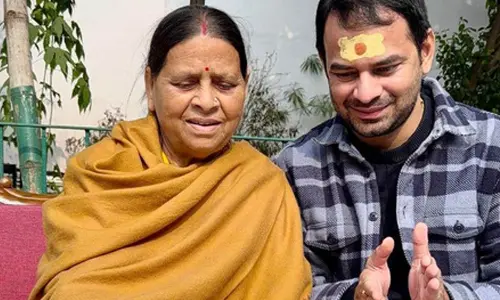Modi’s I-Day address sounded more like a poll bugle this time

The overwhelming fact is that India enjoys a unique position in global geopolitics
Financial majors like Morgan Stanley have clearly put their bets on India as the emerging economy with the most growth potential right now. The credit for this rapid rebound has to go in large measure to the economic strategies of the present government as well as the canniness of the central bank. It is this success that prompted the Prime Minister to enumerate the many achievements of the past nine years in his address.
The future outlook for the economy was in focus during Prime Minister Narendra Modi’s Independence Day address. He pointed to 2047 as the year when India would become a developed or “viksit” nation, 100 years after attaining independence from colonial rule. It was also a speech marked by supreme confidence in his ability to remain in power after next year’s elections and guide the country towards this goal. Whether he remains in power or not, one fact is undeniable - this is India’s moment to surge ahead as an economic power. The fact that it has remained as the fastest growing major economy for the second year in a row is a remarkable achievement, given the external headwinds faced over the past three years. After the economy contracted in the 2020-21 fiscal, it was not expected that it would rebound so fast in the following two years. It is still being termed as a fragile recovery but recovery it is, and financial majors like Morgan Stanley have clearly put their bets on India as the emerging economy with the most growth potential right now.
The credit for this rapid rebound has to go in large measure to the economic strategies of the present government as well as the canniness of the central bank. It is this success that prompted the Prime Minister to enumerate the many achievements of the past nine years in his address. Being the last before he faces the polls next year, it is inevitable that it sounded more like a poll bugle with new development schemes being launched. In this, he followed in the footsteps of his predecessors, many of whom used the occasion to launch new programs.
Indira Gandhi especially always had a new one formulated to be unveiled on Independence Day. For instance, she set forth her major anti-poverty plank, the National Rural Employment Programme from the Red Fort. This was later metamorphosed into the Mahatma Gandhi National Rural Employment Guarantee Programme (MGNREGA) that brought much accolades to the UPA government.
In line with this tradition, Modi unveiled the new Vishwakarma Yojana to provide credit to traditional artisans and another programme to provide jobs to two crore women to support women-led development. A scheme to train women in self-help groups to repair drones and assist in agriculture development was yet another announcement.
He also referred to the target of India becoming a five trillion dollar economy by 2025. He has previously forecast that this league would be reached by 2024 but it remains at the level of 3.75 trillion dollars right now.
Apart from future predictions, he was able to highlight India’s advantages right now in seeking to achieve the goal of a developed economy by 2047. A major one is demography, giving the benefit not only of a large but a youthful population. He mentioned the upside of having 66 per cent of its population under the age of 35, but did not refer to the bigger problem of offering the right education or skills to prepare them for the job market. The current educational system is not geared up to provide basic vocational skills to the youth. The new education policy (NEP) has apparently been formulated to remove these shortcomings but it will take several years to have an impact on the quality of education.
The new world order was also pointed to in the context of the G20 presidency being held by India. He noted the changes in the post-pandemic world that have brought this country to the forefront. Though it was not explicitly stated, the fact is that this country currently has a unique position in global geopolitics. With the Ukraine war uppermost in everyone’s minds as well as the resulting disruption of the world economy, there is an urge for peace and dismay at the prolonged nature of the conflict.
India can play a mediator between the two sides, given its cordial relations with both sides. The traditional longstanding relationship with Russia has not abated in recent years and even improved with the expanded oil purchases from that country. On the other hand, relations with the U.S. and other western powers like France are warmer than ever before in the past. In such a scenario, India can play a powerful role towards peace on the world stage.
The Independence Day address was thus a melange of poll promises and record of past achievements as well as an outline of India’s role in the world today. There is no doubt this country has reached the high table of the world owing to its growing economic clout and enormous success in the arena of high technology. It now needs to move forward boldly to achieve the goal of bringing the entire population out of poverty. Only then can it don the mantle of a developed country.














